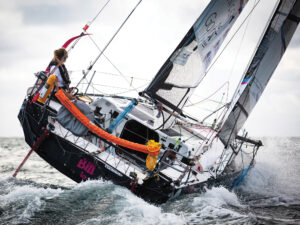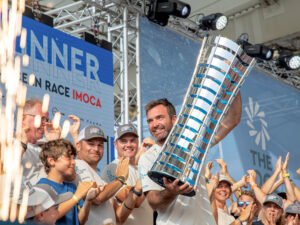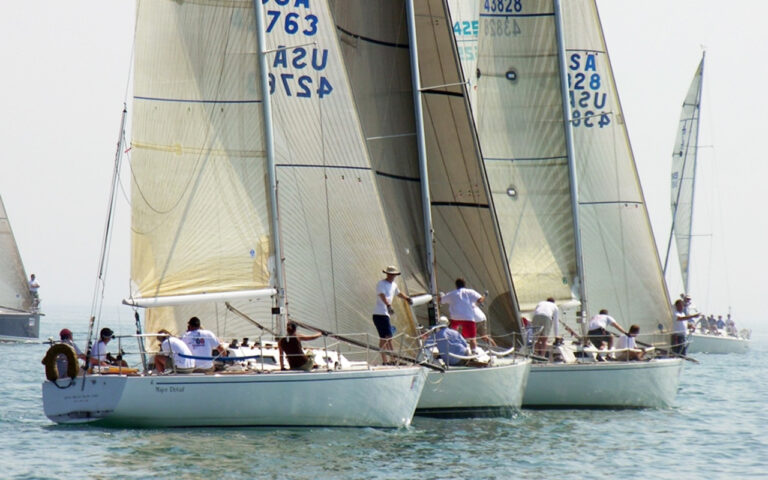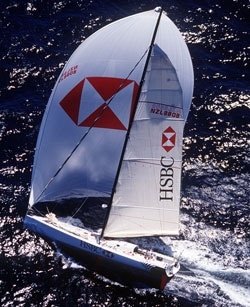
When sailors want to see the future of monohull sailing, they often look to the Open 60s used for the Around Alone and Vendée Globe singlehanded races. A loose set of class rules and the efficiency requirements of effective singlehanded sailing combine to make these boats a testing ground for innovative concepts and new materials. However, in the 2002-03 Around Alone race, which will start from Newport, R.I., in September, the future of sailing will look very much like it did two years earlier when the Vendée fleet left France. Most of the boats entered in the five-leg Around Alone were either sailed in the Vendée or designed before the Vendée started.
One of the few exceptions is HSBC, a new 60-footer drawn up by the Owen Clarke Design Group, for 48-year-old Graham Dalton, Grant Daltons older brother. The boat, built by Southern Ocean Marine in Tauranga, New Zealand, was launched Feb. 20 and bears a strong resemblance to Ellen MacArthurs Open 60 Kingfisher. This is little surprise since the core design team for HSBC is the same one that designed Kingfisher, minus Rob Humphreys.
“The hull lines of the Dalton boat are a development of the hull lines drawn by Rob for Kingfisher,” says lead designer Merfyn Owen. “The balance of boat is same, the underwater profile is the same, the keel is the same, the rudders are the same.”
But, Owen adds, there are some significant differences between MacArthurs flashy yellow and blue steed and Daltons boat, painted a reserved white with black trim.
“When we made choices on Kingfisher,” says Owen, “we made the choice for reliability over speed. The idea with Kingfisher was she had to finish the race, and if she finished shed be well placed because the Vendée tends to be a race of attrition. We knew we could do a faster boat. The result is Grahams boat, its Kingfisher with the gloves off.”
A key difference between the two boats is the standing rigging. HSBC is one of the first Open 60s to exclusively use PBO rigging. There isnt any rod rigging on the boat, allowing for a lighter, taller rig.
“Its quite a big leap,” says Owen. “We couldve made the choice with Kingfisher, but we didnt feel there was enough known about the PBO. We now have confidence in the fatigue life of the PBO.”
Another leap is the articulating bow sprit. Like PBO, this feature was usually avoided on earlier Open 60s because of reliability concerns. Owen feels that because the articulating bowsprit was a part of HSBC from the start–in the past many were retrofitted on to fixed-sprit boats–that there is a much higher chance of it surviving the race. While Open 60 bowsprits are, proportionally, fairly small, Owen says this ability to drag the spinnaker to windward, even slightly, is significant for two reasons: it increases the effective downwind sail area in light air conditions and it balances the boat, which helps to ease the load on the autopilots and enables the spinnaker to be carried in more wind.
Kingfisher was designed to be as manageable as possible, especially in difficult conditions. Efficiency, not overall power, was the primary goal and as a result the boat had one of the smallest mains in the Vendée Globe fleet. This is not the case with HBSC, which has more horsepower than its predecessor. “The Around Alone is a sprint,” says Owen. “It takes you close to the coast more often. It spends more time in the area around the tropics and the overall met profile for the race is a lower windspeed. Weve been reacting to that.”
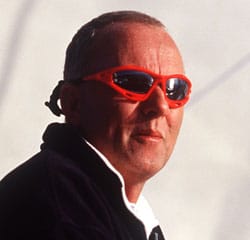
To further help during the light conditions, the design group went with a twin wheel set up instead of the standard twin tillers. “That came about for a number of reasons,” says Owen. “Graham is not the most experienced sailor, hes on a huge learning curve. But one of his strengths is he can helm. The tiller driven Open 60s are not the most comfortable boats to steer. Modern wheel systems weigh a fraction of what they did 8 to 10 years ago when people were making choices like that. Its heavier, but its hardly worth talking about.”
The choice of a single daggerboard–Kingfisher had two–did save some weight. It also saved the program a nice chunk of money.
“This projects well funded, but no project has all the money in the world,” says Owen. “[A second daggerboard] is equivalent to a new mainsail once you get it all in.”
The HSBC team would rather spend that money on a new main for the final leg. Having been involved with Around Alone campaigns in the past, Owen knows the value of being able to update gear and sails late in the race, when many campaigns are running out of funding and their boats are deteriorating.
All up, Daltons boat wont look much different from its competitors in the upcoming Around Alone, which, suits Owen and his crew just fine.
“Its not in my philosophy to go off on a flyer,” he says. “We needed to innovate, sure, but we need to be confident about what were doing and make good choices. If you put it too much really quickly you dont know whats quick and whats slow.”

